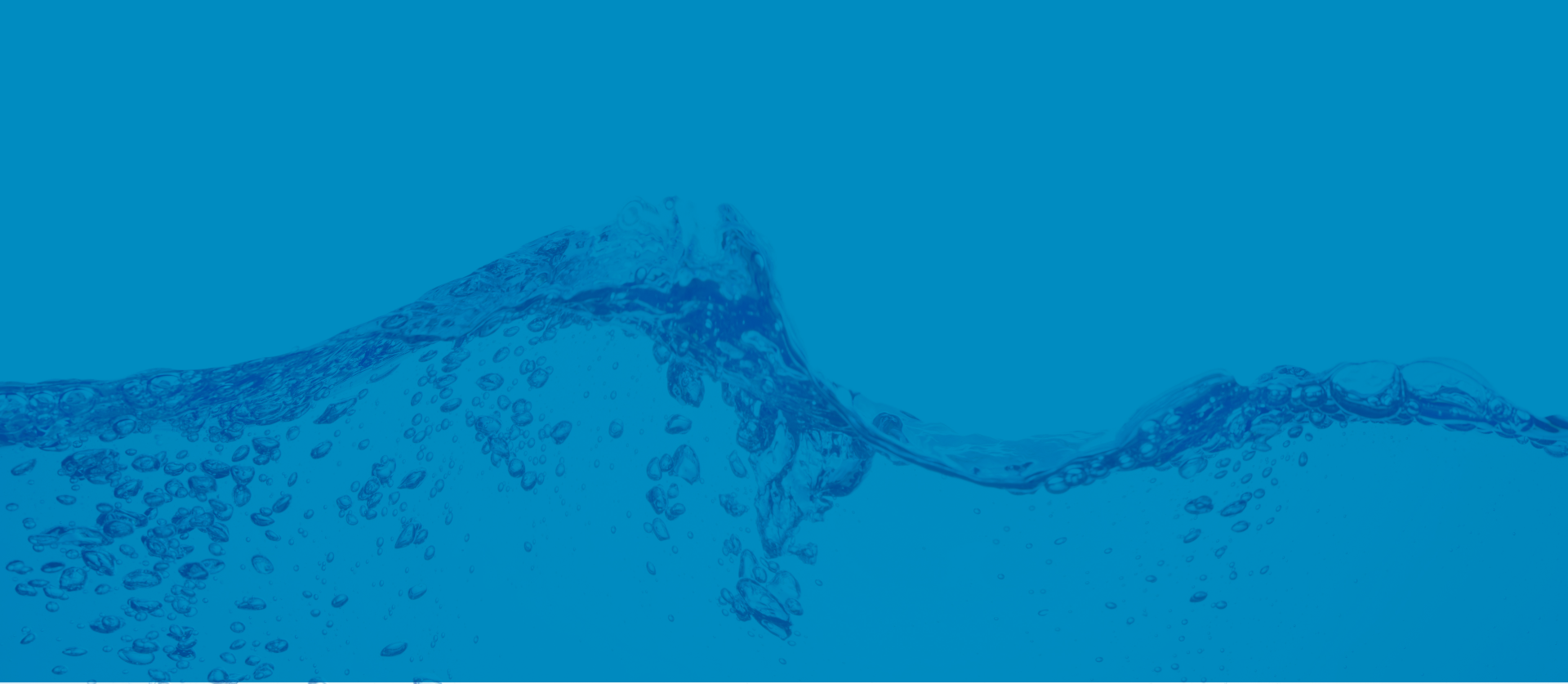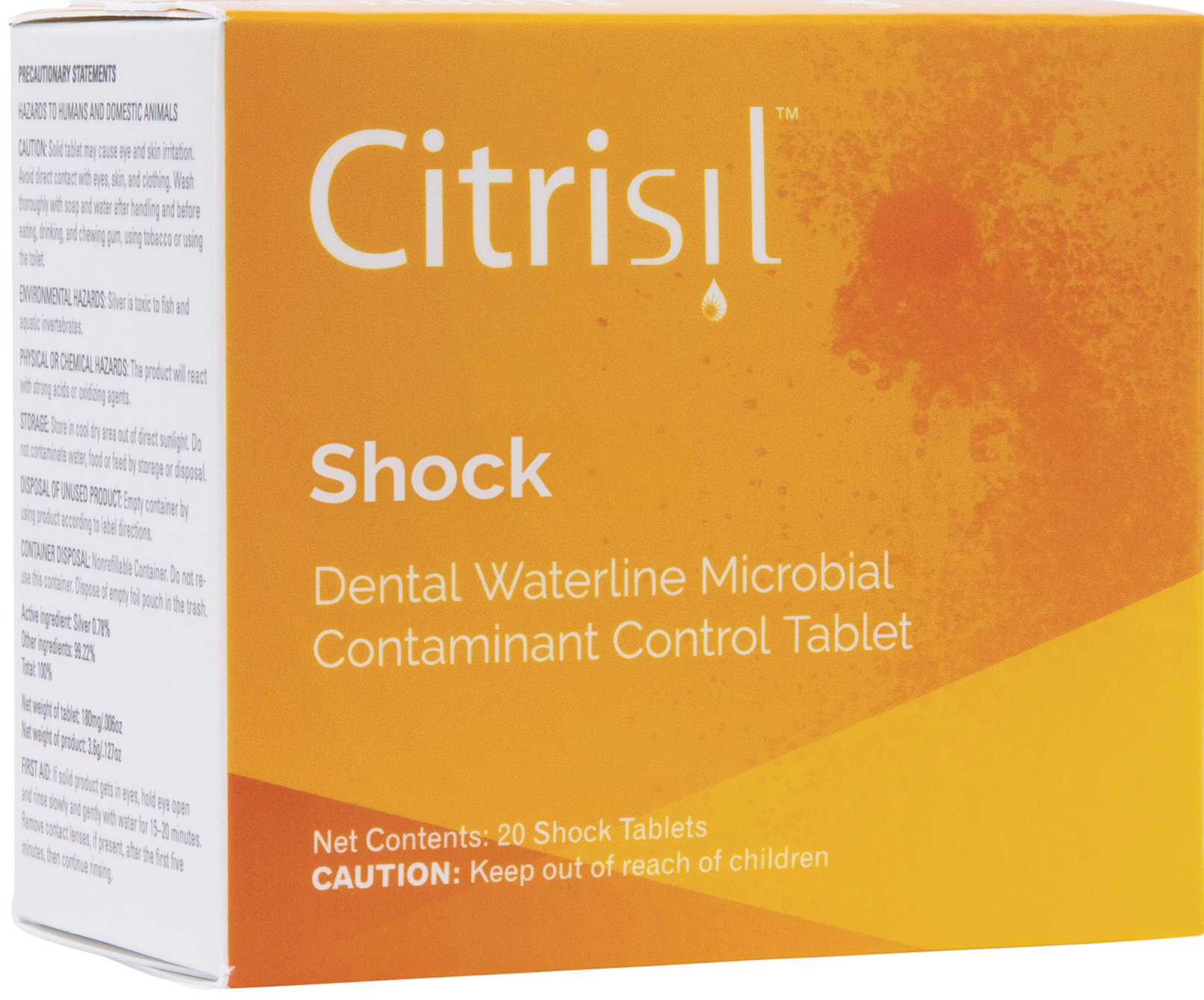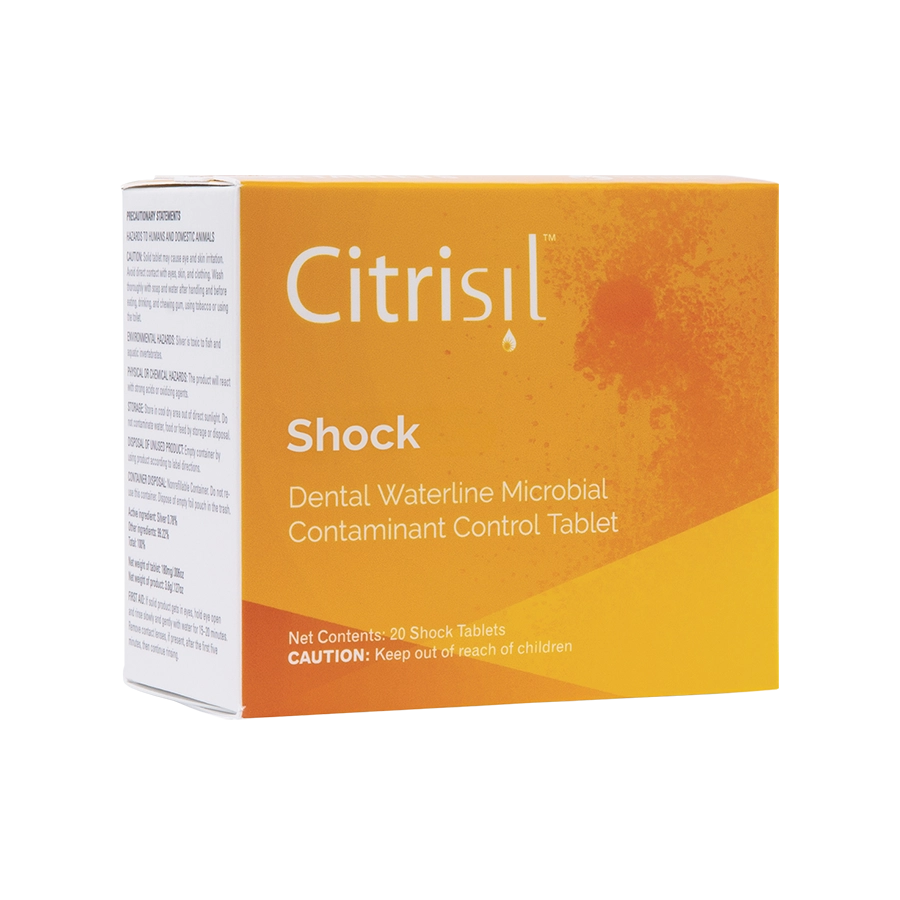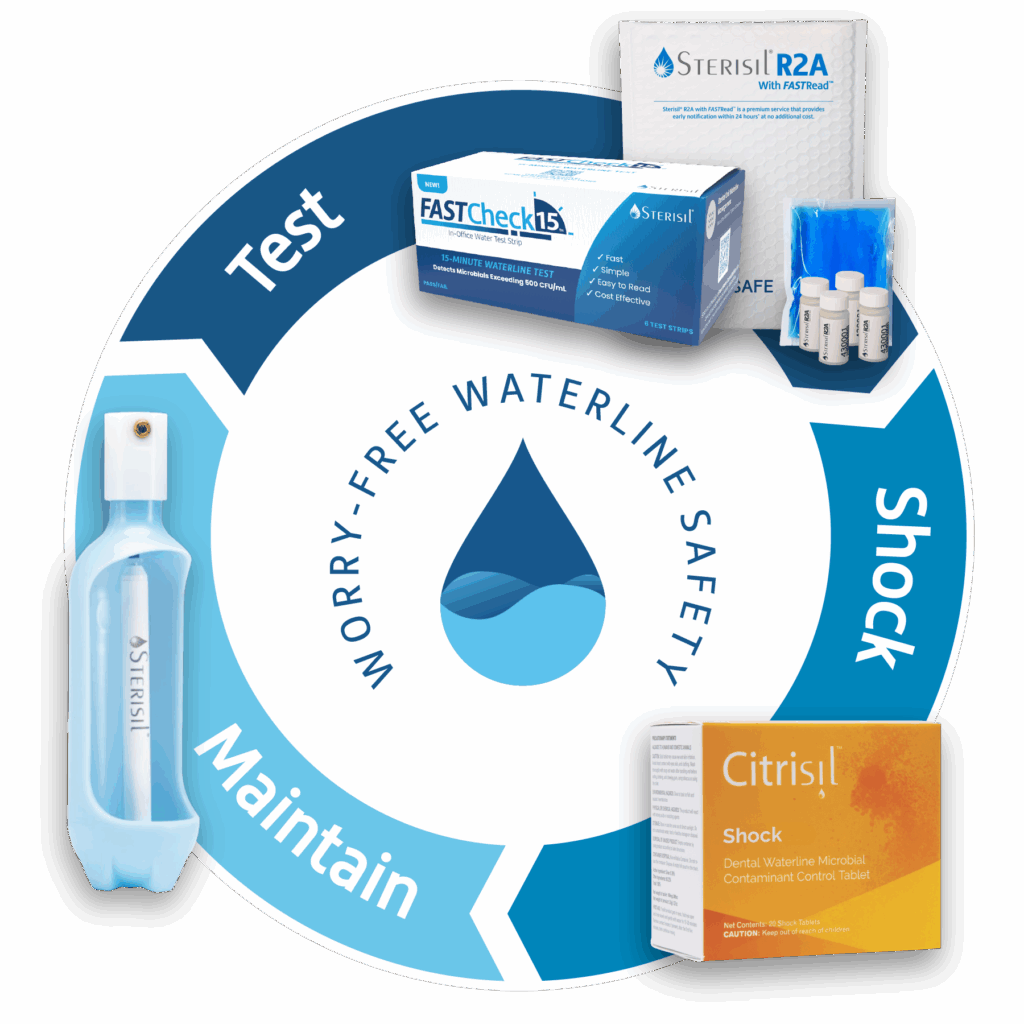Your cart is currently empty!

Why You Shouldn’t Use Bleach to Disinfect Dental Waterlines

It’s tempting. You already have bleach in the office. It’s strong. It’s cheap. So why not use it to clean your dental waterlines?
Here’s the catch: bleach isn’t EPA-approved for use in DUWLs—and it does more harm than good. From corroding expensive handpieces to failing tests, using bleach as a line cleaner backfires in major ways.
Dental waterlines require a precise balance of safety, efficacy, and equipment compatibility. And while bleach might kill bacteria, it also corrodes your lines, damages your equipment, disrupts test results, and poses safety risks to your team and patients.
So, before you reach for that bottle of bleach, let’s unpack why it doesn’t belong anywhere near your dental water system—and what you should be using instead.
What Bleach Was Made For—And What It Wasn’t
Let’s start with what bleach is. It’s a strong oxidizer, excellent for disinfecting hard, non-porous surfaces like bathroom counters, floors, and certain medical instruments. It’s not subtle. It’s not forgiving. And it’s definitely not designed for delicate, narrow-bore dental tubing.
Now here’s what bleach isn’t:
- It’s not EPA-approved for DUWL treatment or shock disinfection.
- It’s not compatible with dental materials, adhesives, or amalgam separators.
- It’s not formulated to rinse cleanly from DUWL systems.
- It doesn’t have IFU for the proper dilution ratio or for how long it should be left in waterlines safely.
Approved DUWL products are backed by EPA registration and are specifically engineered to clean dental tubing without causing collateral damage.
The Risks of Bleach in DUWLs
What might seem like a budget-friendly solution can actually cost your practice much more in the long run. Here’s what can go wrong:
1. Corrosion of Equipment
Many dental unit manufacturers advise not to use bleach in the dental unit in their IFUs. Bleach degrades metals and plastics, especially when used repeatedly or in incorrect concentrations. This leads to:
- Pitting in handpieces and valves
- Leaks or cracks in water bottles and tubing, which also creates pockets for biofilm to adhere to and hide
- Damage to sensitive vacuum or separator systems
Diluted bleach has a specific amount of time that it must be in contact with biofilm to work. It also has a specific time that it must be flushed out before damaging equipment, which is only about 5 minutes, depending on the sodium hypochlorite content in your chosen bleach product (the amount of which also defines which bleach to water dilution ratio is required).
For example, a 1:9 bleach to water ratio for 10 minutes could be successful, but more than 15 minutes could cause damage to your equipment. Confused yet? We hear you. That’s why we recommend a DUWL-specific shock product, preferably in a grab-and-go tablet form, like Citrisil Shock.
2. Interference with Amalgam Separators
Many separators rely on specific internal chemistry to function. Bleach can disrupt this balance, voiding warranties or reducing filtration efficacy—leading to environmental compliance violations.
3. Test Failures and Hidden Contamination
Using bleach may appear to clean lines, but it can create pockets that leave behind residual biofilm or interfere with microbial testing—either by suppressing bacterial growth temporarily or by damaging testing devices. False negatives, test failures, and contamination flare-ups are all risks.
4. Health and Safety Hazards
Mixing bleach improperly, especially in enclosed treatment rooms, can release chlorine gas—a potent respiratory irritant. Staff exposure to fumes or skin contact also introduces liability.
Different bleach products contain different concentrations of bleach, which each require a different dilution ratio, and there is no IFU to determine which ratio is correct nor how long it should be left in the lines. This leaves lots of room for error, which can easily be unsafe for your patients, your staff, and your equipment.
5. Unpleasant Patient Experience
Even trace amounts of bleach can leave a lingering chemical taste or odor in the water. This not only affects comfort—it can erode patient trust in your clinical hygiene standards.
Real-World Consequences
A hygienist in Texas recently shared her experience:
“We tried diluted bleach as a quick shock because we were low on supplies. Two weeks later, we failed our waterline test—and we had to reschedule four patients.”
This isn’t uncommon. Quick fixes often lead to more expensive problems.

A Better Way: Shock With Products Designed for DUWLs
EPA-registered DUWL shock products, like Citrisil™ Shock, are specifically engineered to:
- Remove biofilm from inside waterlines
- Be safe on dental equipment and materials
- Leave no taste, odor, or residue
- Work in tandem with long-term treatments like the Sterisil® Straw
These shock treatments are dosed accurately, rinsed effectively, and don’t require guesswork. Plus, they’re supported by clear protocols and compatibility testing.
Why the Confusion Exists
A major source of confusion is that bleach can be used to disinfect some medical equipment—so the assumption is, it’s good enough for waterlines. But DUWLs are uniquely vulnerable because of their narrow tubing, water stagnation, and low-flow conditions. Biofilm forms easily here, and strong oxidizers like bleach can’t fully penetrate established colonies—or prevent them from returning.
The most important distinction is that no EPA dental waterline treatment includes bleach on its label. What’s safe for general disinfection is not safe for continuous or shock treatment inside waterlines.

How to Know You’re Using the Right Protocol
Ask yourself:
- Is your shock product EPA-registered for DUWL use?
- Does it come with clear instructions and dosing guidelines?
- Is it designed to work in tandem with your treatment straw/system?
- Will it damage your separator, handpieces, or bottle?
If the answer to any of these is uncertain, it’s time to upgrade your protocol.
Bleach: Great for Bathrooms, Not Bottles
Let’s keep bleach where it belongs—on bathroom floors and counters. When it comes to something as crucial as water used in patient procedures, the risks far outweigh the savings. In fact, we know that many practices started using bleach because it’s more cost effective, but let’s look at a quick breakdown:
Citrisil Shock is only about $2.40 per tablet, where bleach is approximately $0.50 per treatment. This means that Citrisil Shock is less than $2.00 more than bleach per operatory, and it has significantly less risk to patient and staff safety. Plus, you’ll save thousands on costly equipment replacements and handpiece or operatory down time caused by consistent bleach damage.
Bleach might be strong—but strength doesn’t equal suitability. In fact, what makes bleach seem effective is exactly what makes it harmful to your equipment and misleading as a dental solution.
When you use an EPA-approved shock, you’re choosing something made specifically for dental lines. It’s safer, easier, and more reliable—protecting your patients, your staff, and your equipment.
Even diluted bleach isn’t EPA-approved for DUWLs. It can still damage equipment and compromise compliance. Additionally, there is no IFU for bleach use in DUWLs, so there is no way to find the correct dilution for maximum benefit without the oxidation damage.
Because its oxidative strength can weaken internal parts and isn’t formulated for safe rinsing out of DUWL systems.
You may get false negatives, meaning your waterlines look safe when they’re really not. Pockets of biofilm can be hidden in the pitting caused by bleach. As a general rule of thumb, you should always test before you shock, so you can determine your waterline protocol is working–but you should not be using bleach in your lines regardless.
Not for dental waterlines.
Use an EPA-approved shock product specifically designed for DUWLs, and follow the manufacturer’s Instructions for Use (IFUs) exactly. Citrisil™ Shock is a great option because it’s fast, effective, non-corrosive, EPA-approved, and about 25% less expensive than any other registered DUWL shock products. It’s also the only shock tablet on the market.
Share this post:

Related Posts




